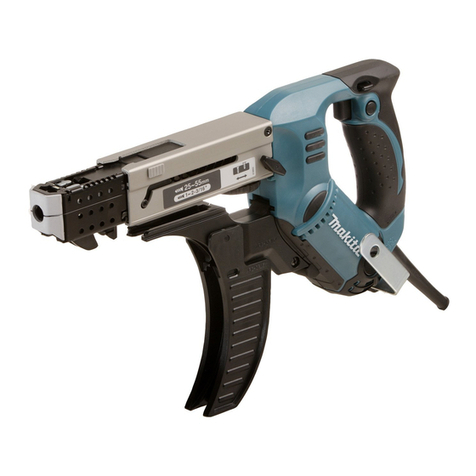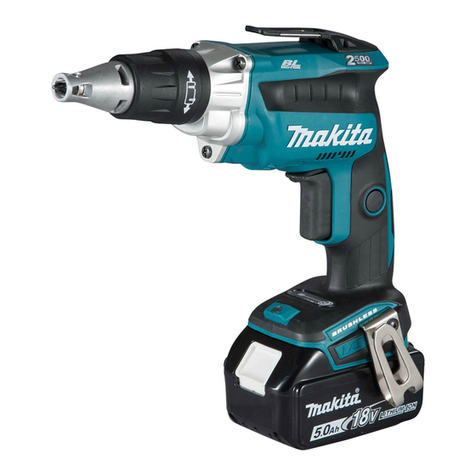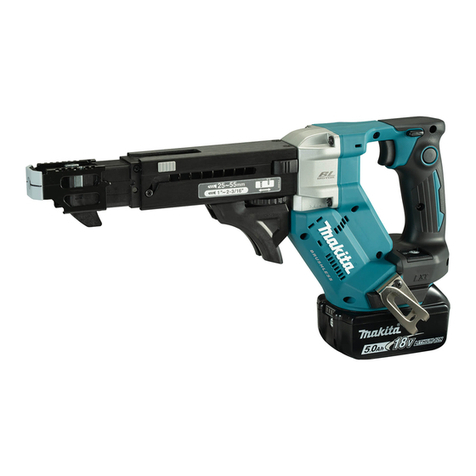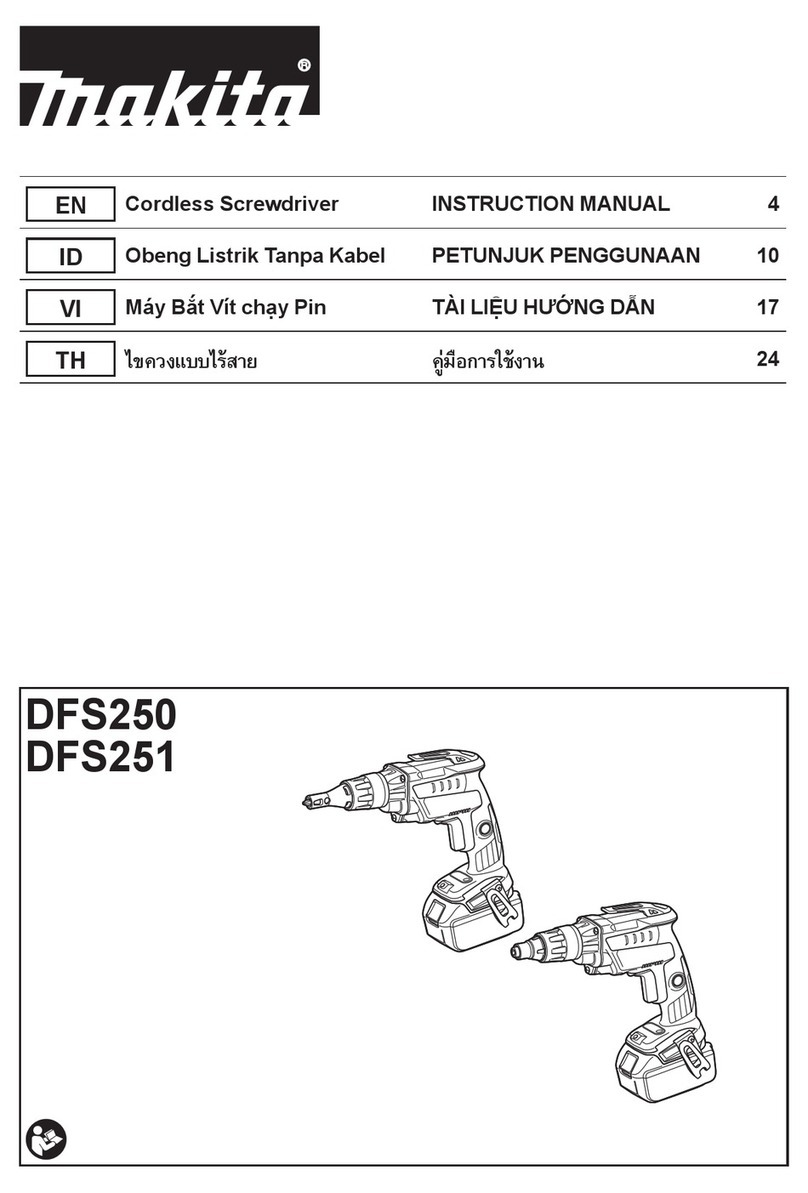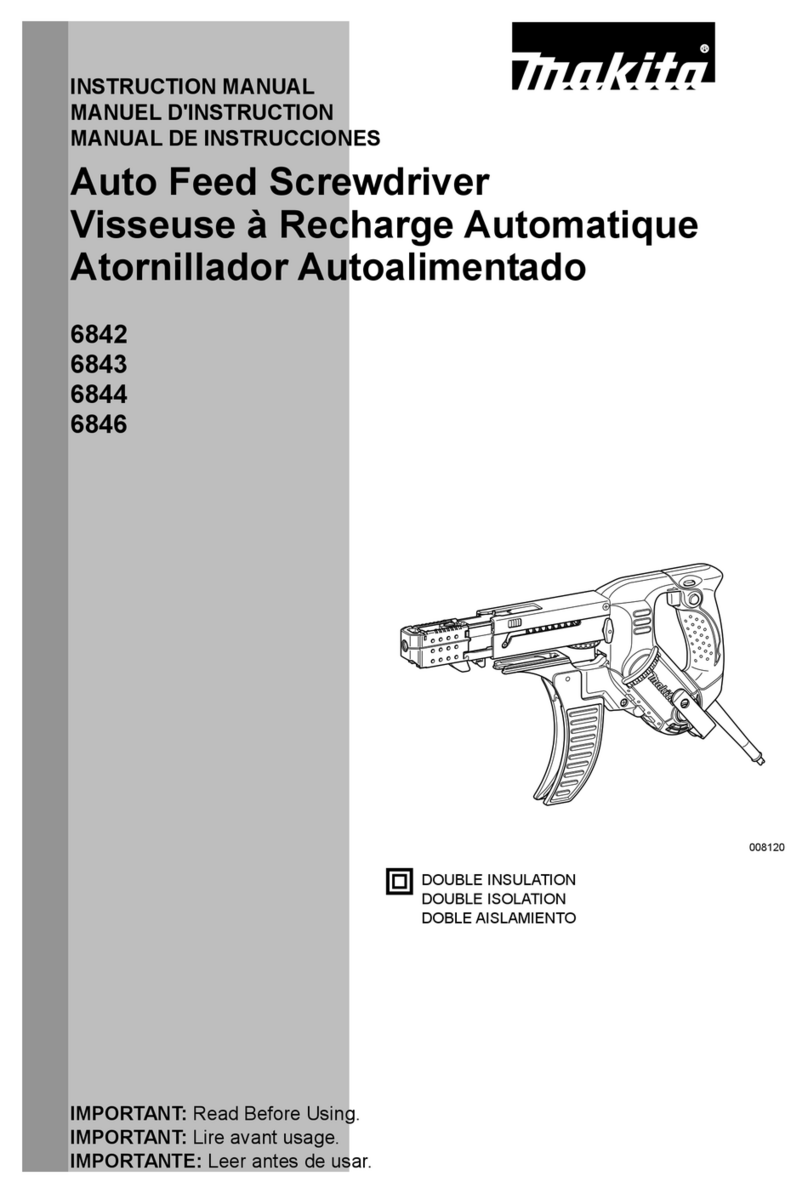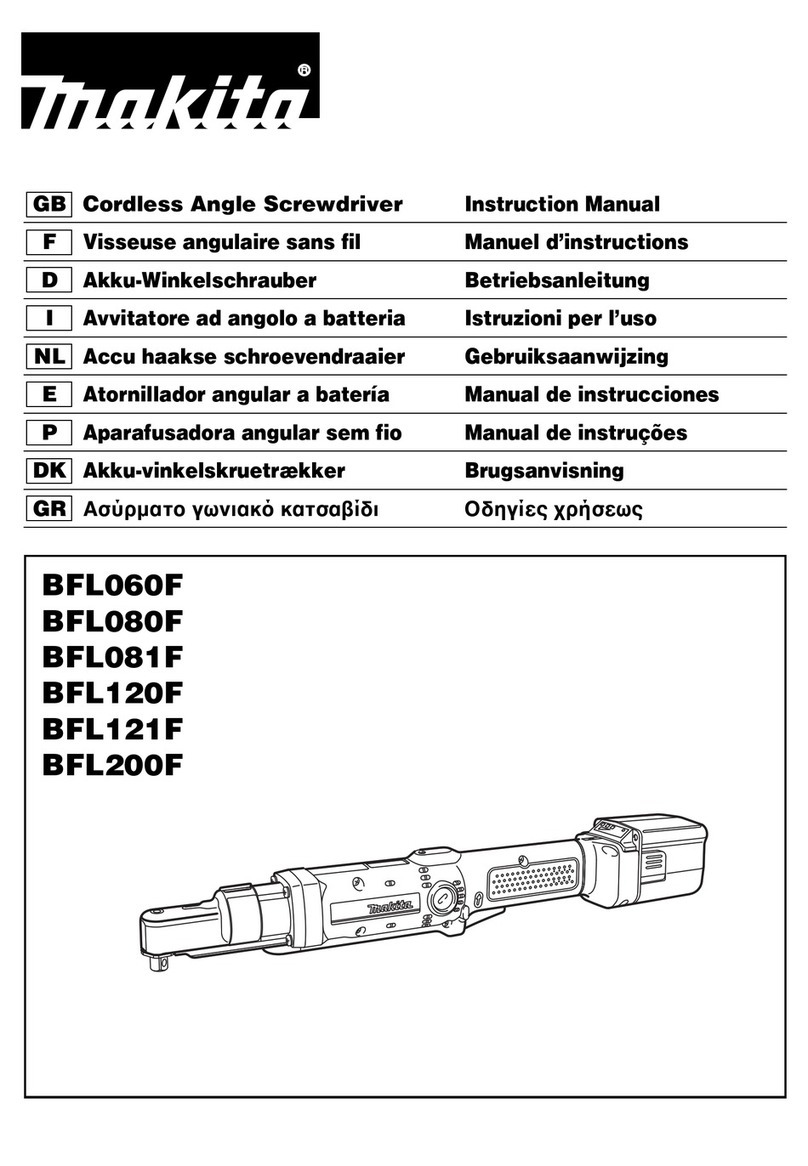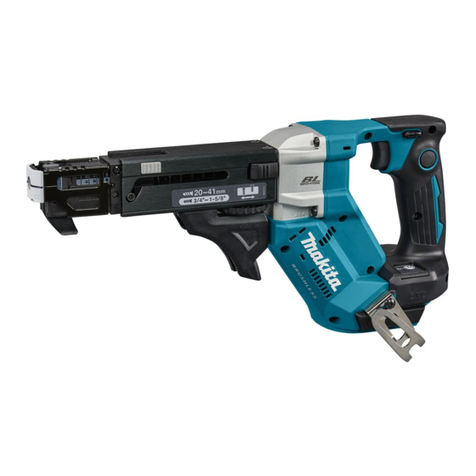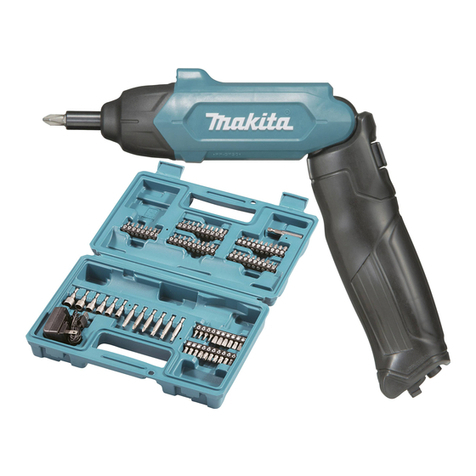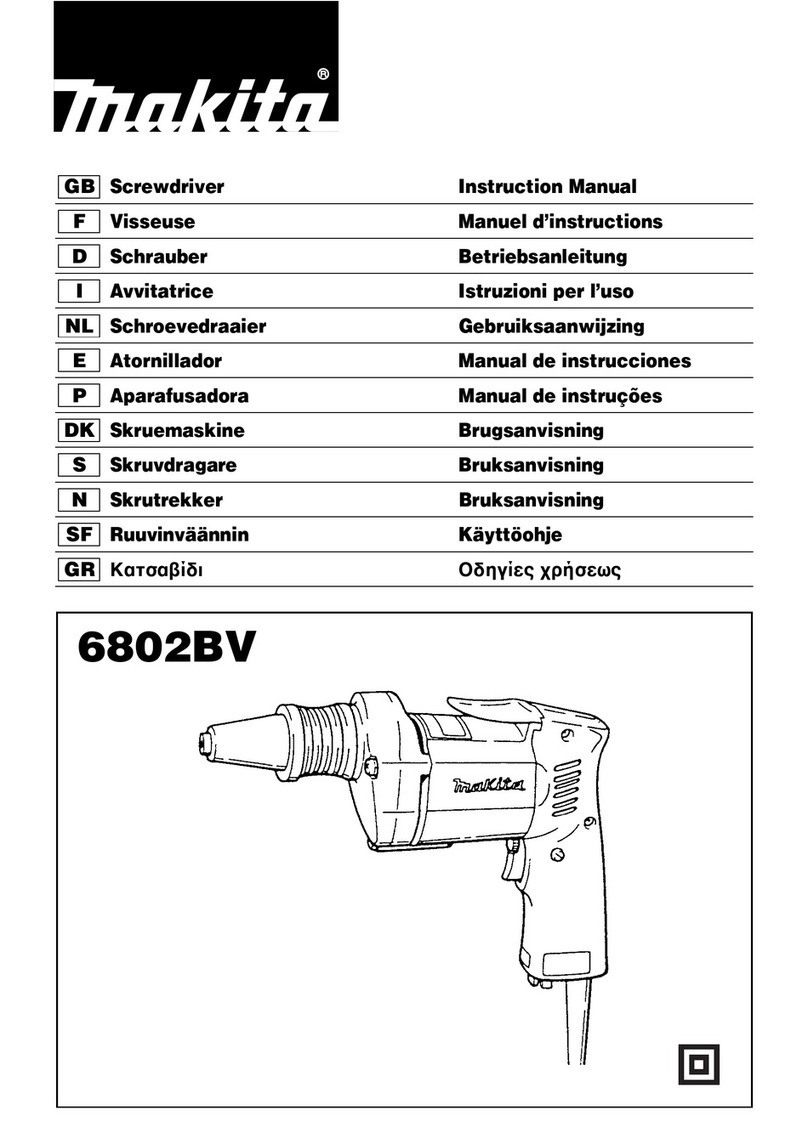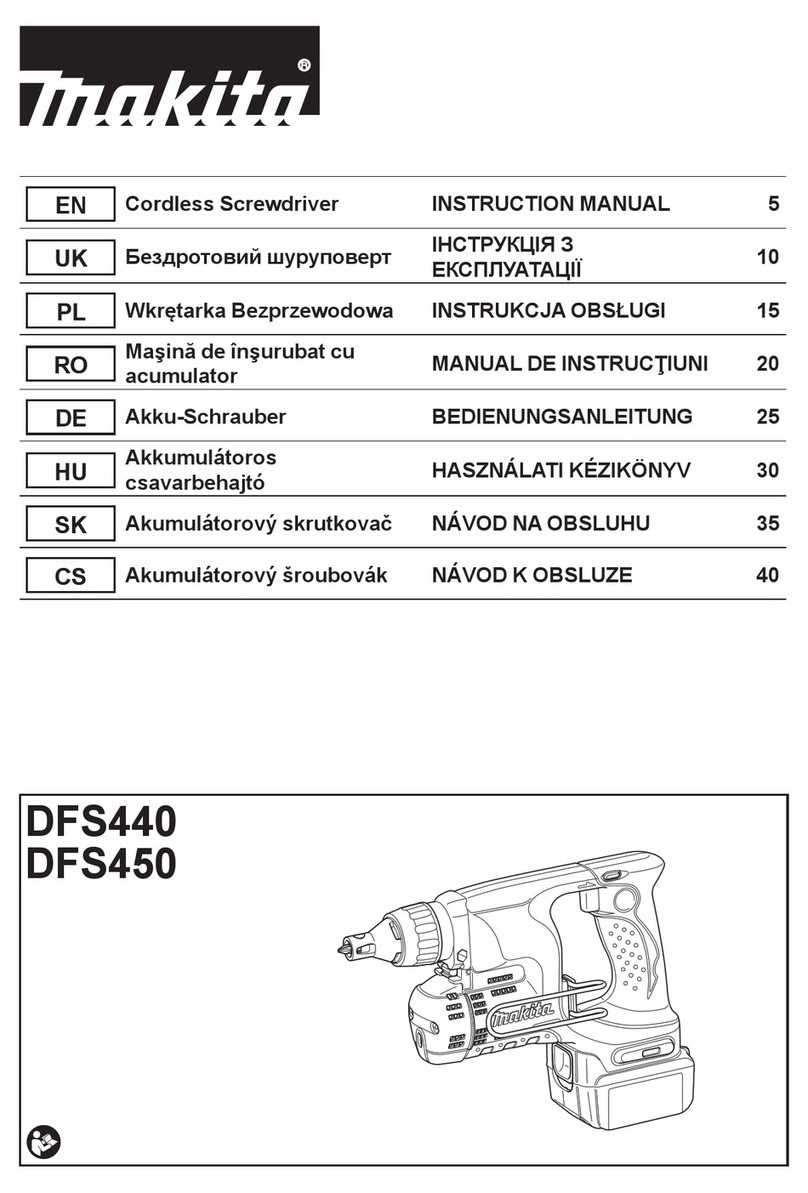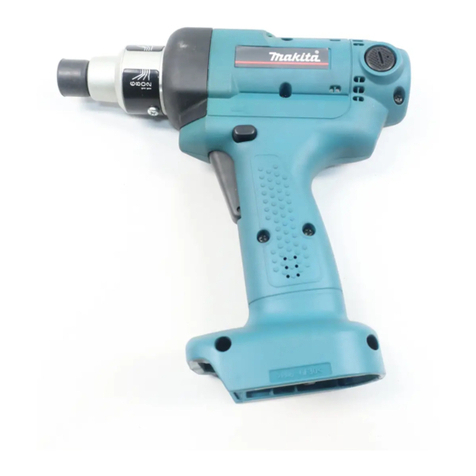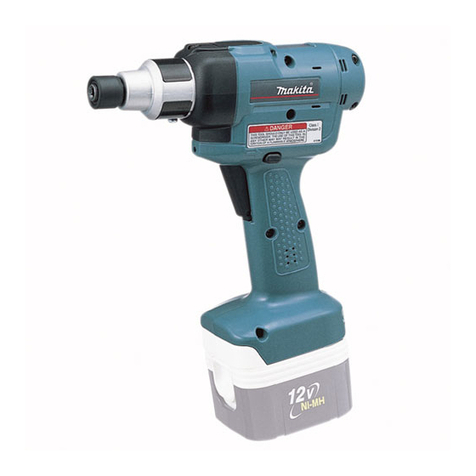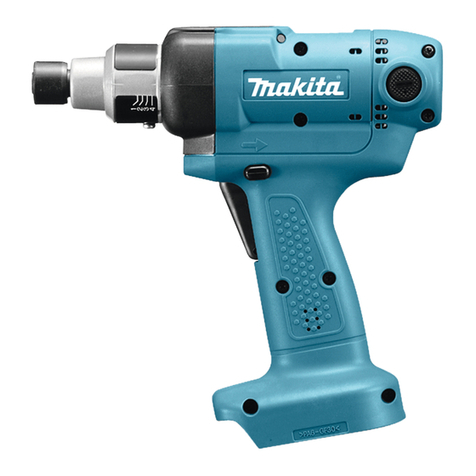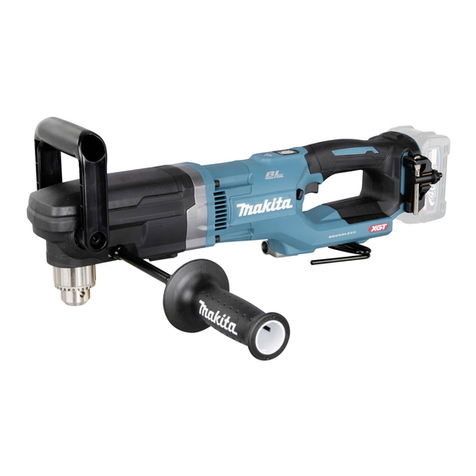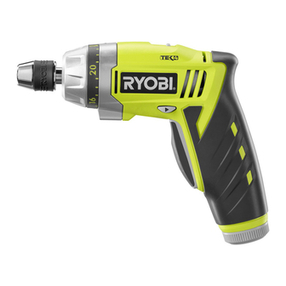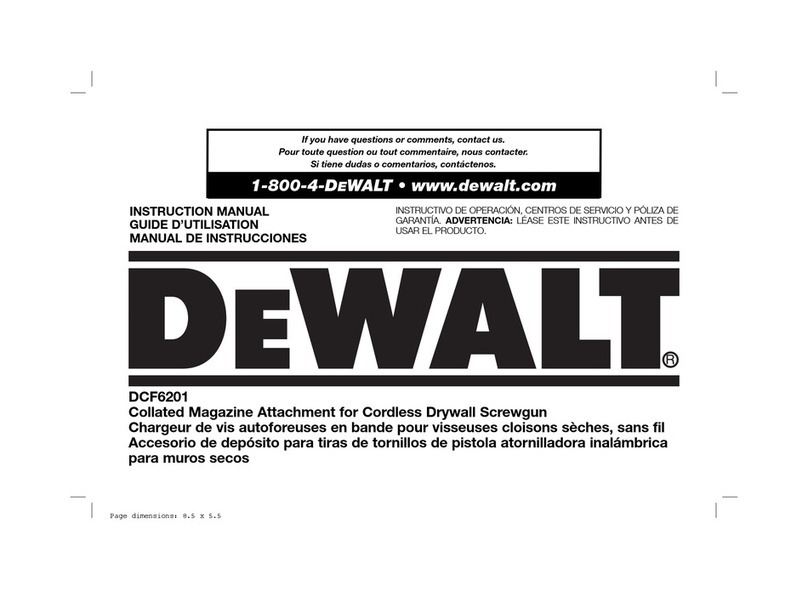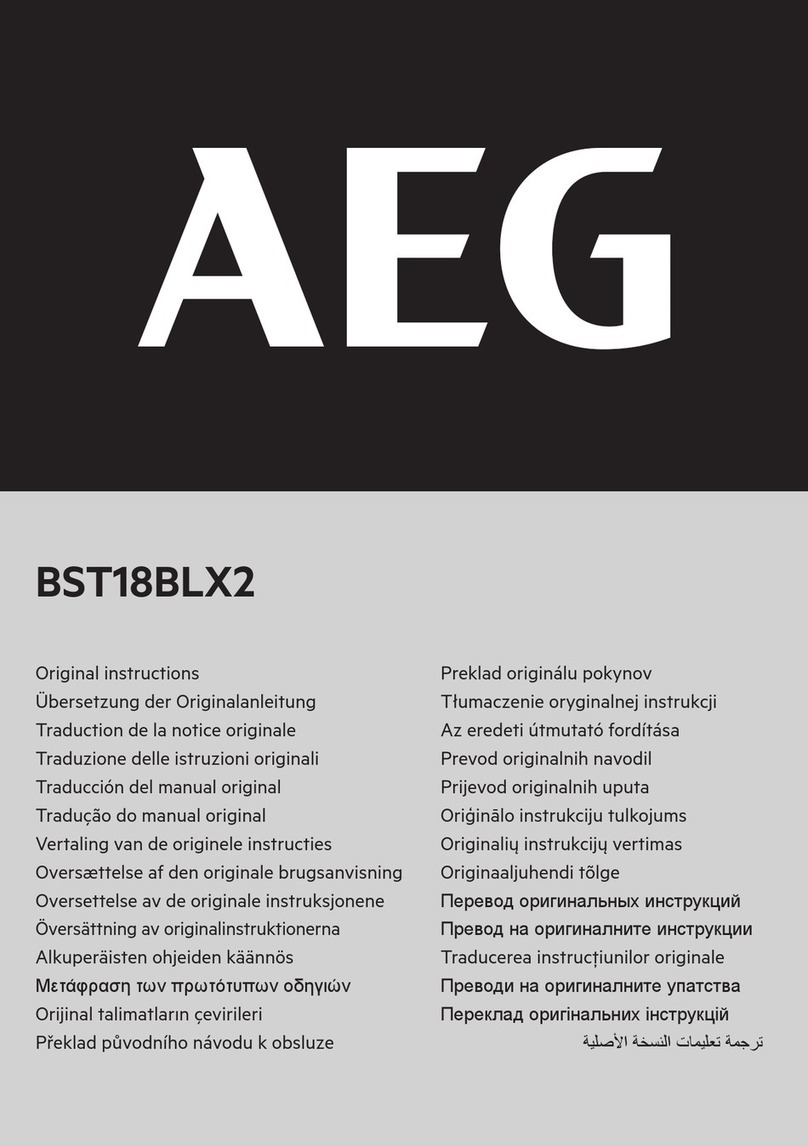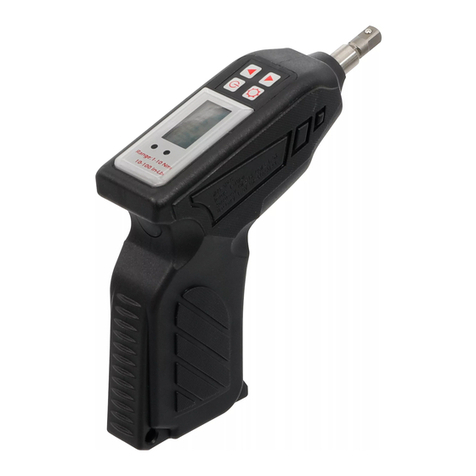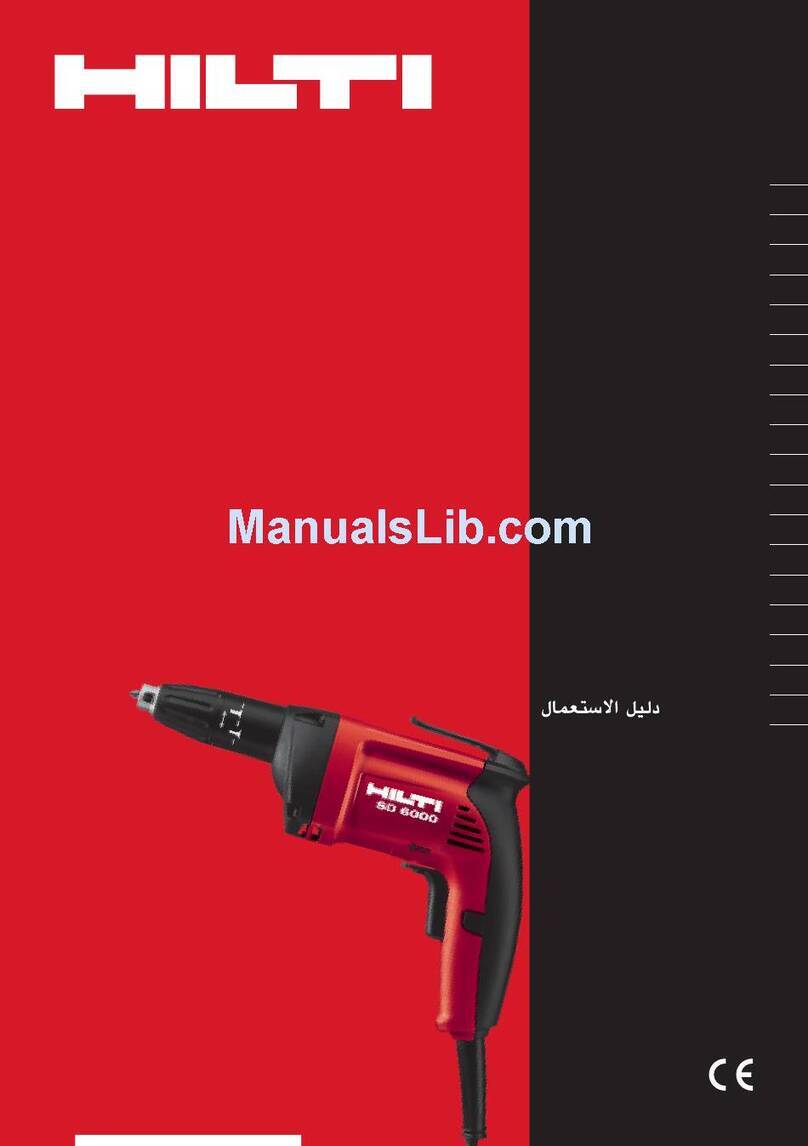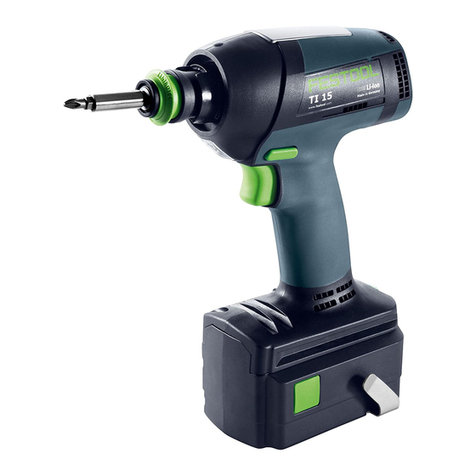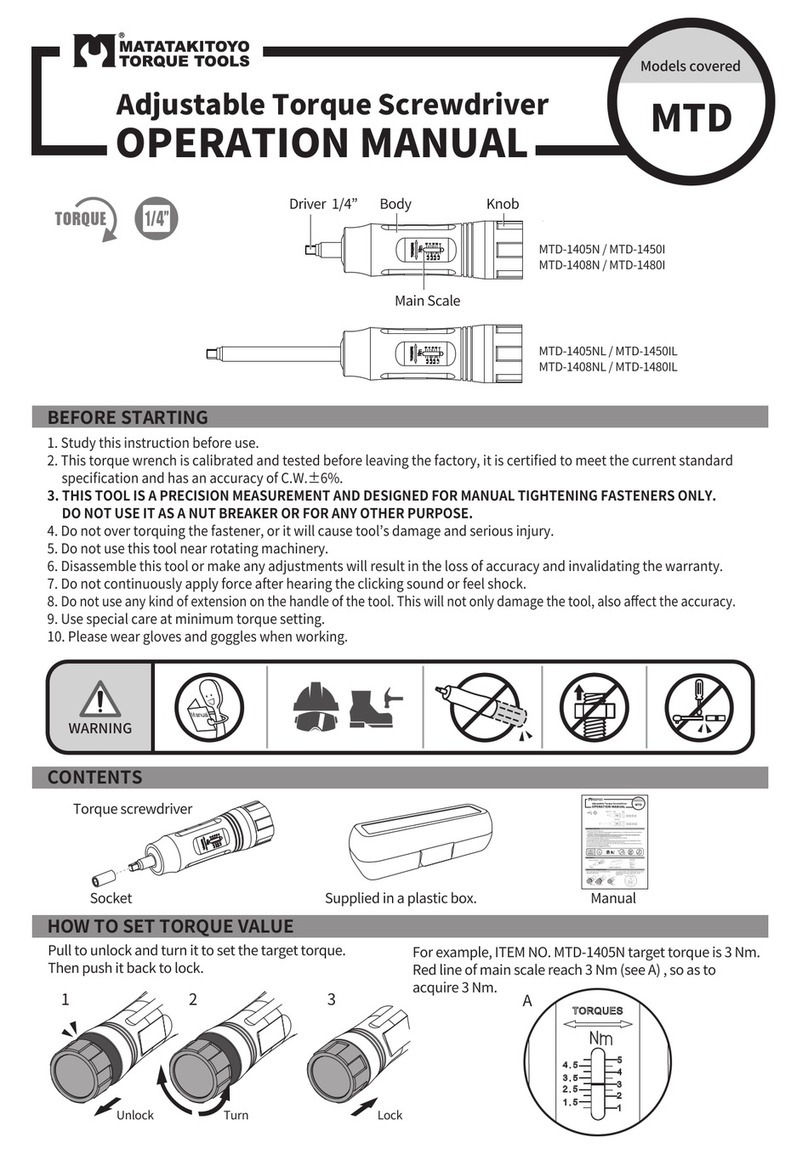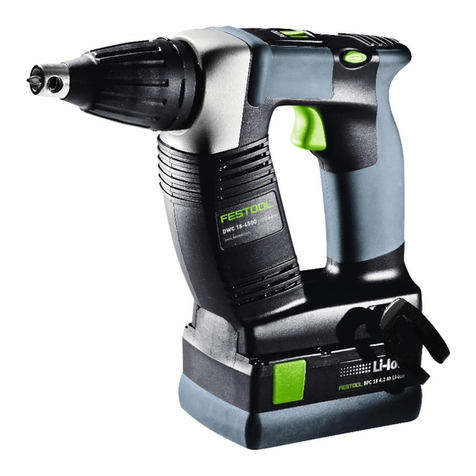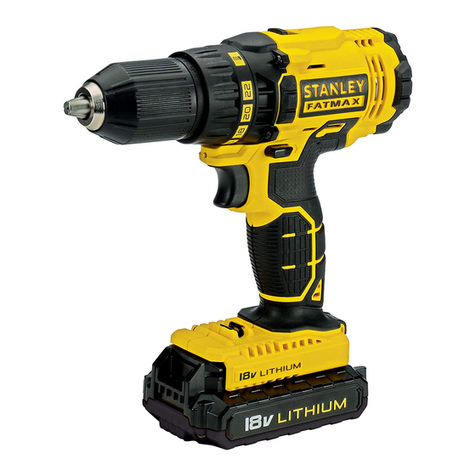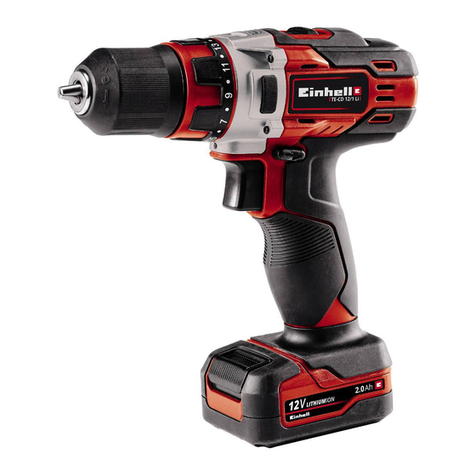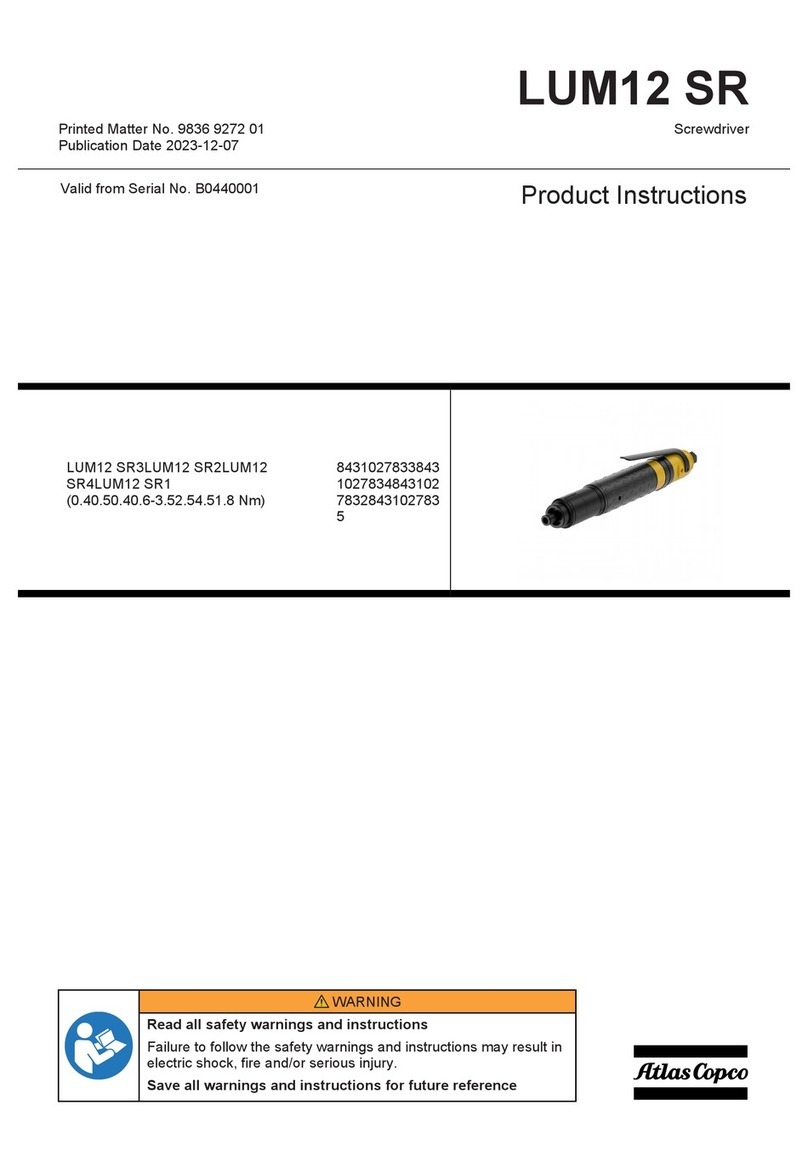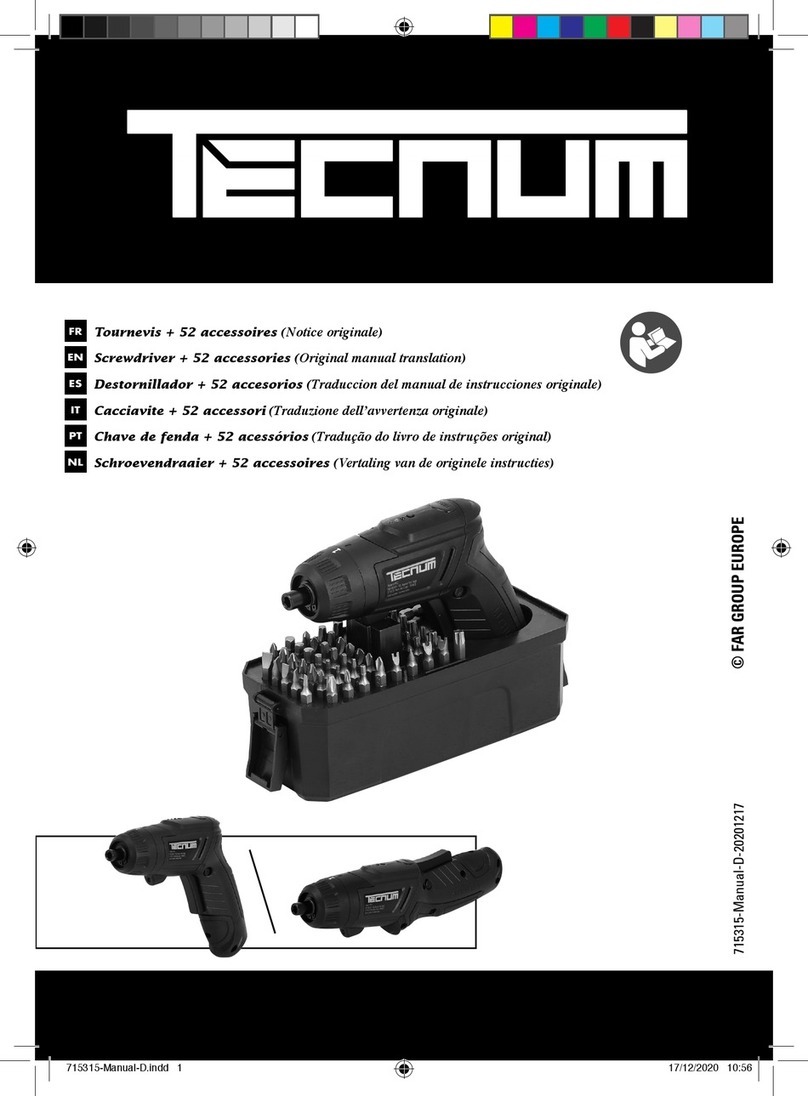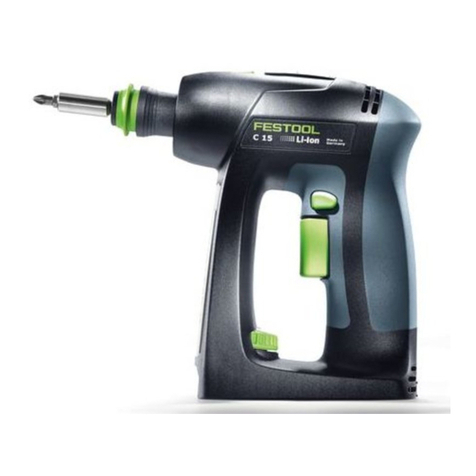
Models No.
Description
PRODUCT
CONCEPTION AND MAIN APPLICATIONS
Specification
Standard equipment
Optional accessories
< Note > The standard equipment for the tool shown may differ from country to country.
P 1 / 12
Dimensions : mm ( " )
BFT120, BFT120F
Cordless Screwdriver 9.6V
Width ( W )
Height ( H )
Length ( L )
TECHNICAL INFORMATION
The above Cordless Screwdrivers for automobile factories have
been developed as upgraded sister tools to the existing models
of Makita 6796D series.
In addition to the same advantages as tools of Model 6796D series,
the new high precision screwdrivers feature lighter tool weight
and more increased convenience.
BFT120F features built-in job light.
L
H
W
174 (6-7/8)
279 (11)
BFT120 BFT120F
256 (10-1/8)
65 (2-9/16)
w/ 3.3 Ah battery w/ 2.0 Ah battery
Model No.
No load speed : min-1 = rpm
Driving shank : mm ( " )
Fastening torque : N.m (in.lbs)
Battery
Electric brake
Torque adjustment
LED Job light
Soft starter
Reverse switch
Net Weight : Kg (lbs)
Type of cell
Voltage : V
Capacity : Ah
NiMH
9.6
5 - 12 (44.3 - 106)
6.35 (1/4) Hex
1.3 (2.8) with 2.0 Ah battery
1.4 (3.2) with 3.3 Ah battery
320
Yes
Yes
No Yes
Yes
Yes (possible to adjust with adjust grip)
2.0 / 3.3
* Adjust grip for pre-setting torque ............................... 1 pc. (only for Italy and UAS.)
* Protecor ..................................................................... 1 pc. (only for Germany)
* Battery BH9020 9.6V, 2.0Ah
* Battery BH9020A 9.6V, 2.0Ah w/ Power display
* Battery BH9033 9.6V, 3.3Ah
* Battery BH9033A 9.6V, 3.3Ah w/ Power display
* Charger DC24SA
* Charger DC14SA
* Protectors (red, blue, yellow)
* Adjust grip for pre-setting torque
* Grip base set
* Grip 37
* Automatic refreshing adapter ADP03




